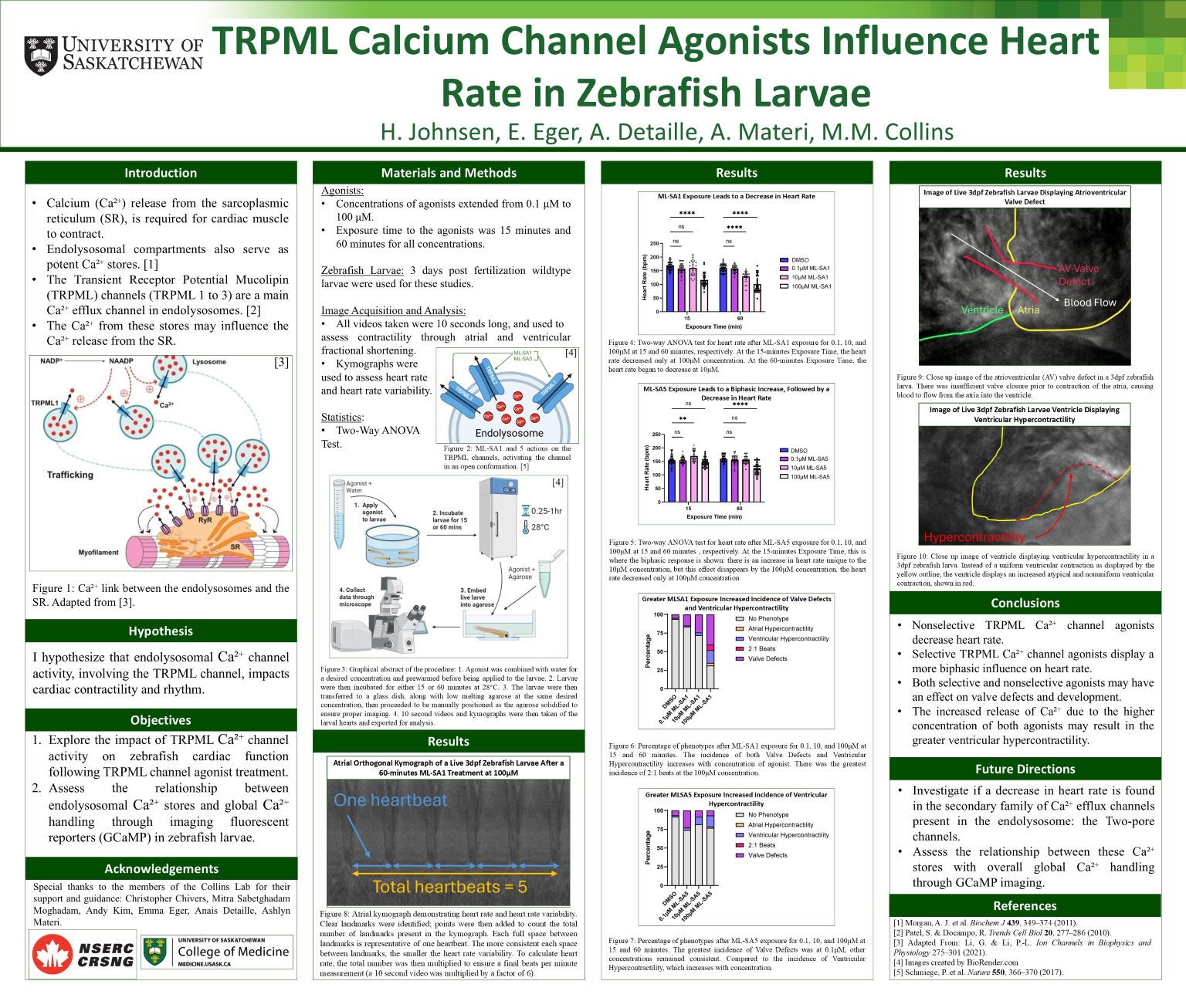
TRPML Calcium Channel Agonists Influence Heart Rate in Zebrafish Larvae
Halle Johnsen
It is well accepted that calcium release from the main calcium store in the cell, the sarcoplasmic reticulum (SR), is required for cardiac muscle to contract. Beyond the SR, the endolysosomal compartments are emerging as potent calcium stores. The main calcium efflux channel in the endolysosomes is the Transient Receptor Potential Mucolipin (TRPML) channels TRPML1-3. The calcium from these stores may influence the calcium release from the SR. Thus, I hypothesize that endolysosomal TRPML channels contribute to calcium handling to regulate cardiac contractility and rhythm. To activate these channels, Mucolipin Synthetic Agonist 1 (ML-SA1), a more nonselective agonist, and 5 (ML-SA5), the more selective agonist, were used to pharmacologically induce calcium efflux in the developing zebrafish. Heart rate, heart rhythm, and contractility were measured through live imaging of beating larval hearts. ML-SA1 treatment reduced heart rate, while ML-SA5 elicited a biphasic response, characterized by an initial increase in heart rate, followed by a decrease at higher concentrations. Both agonists also induced valve defects and ventricular hypercontractility. The valve defects may suggest a developmental sensitivity to the increased calcium efflux, while the hypercontractility shows a potentially altered threshold for contraction.
